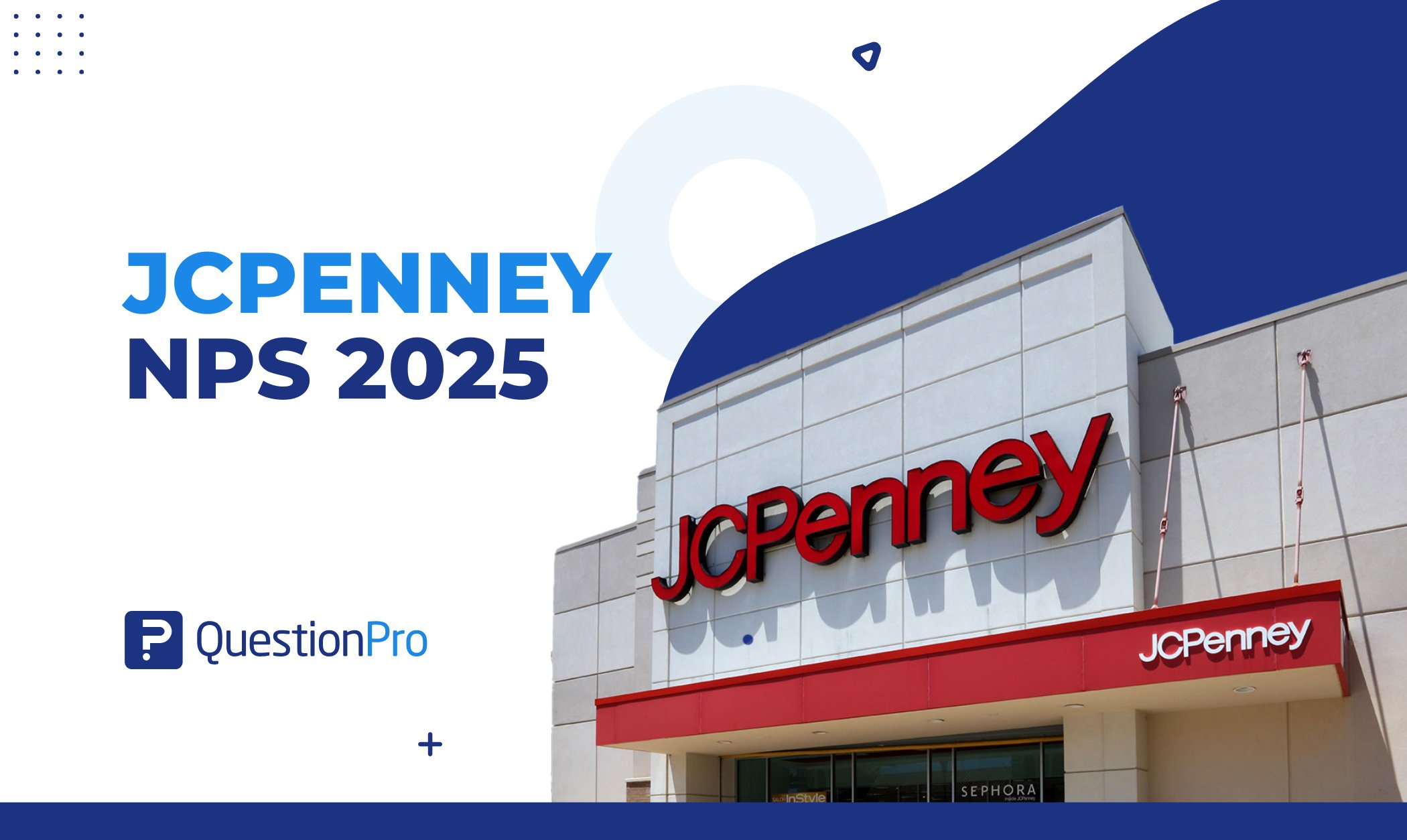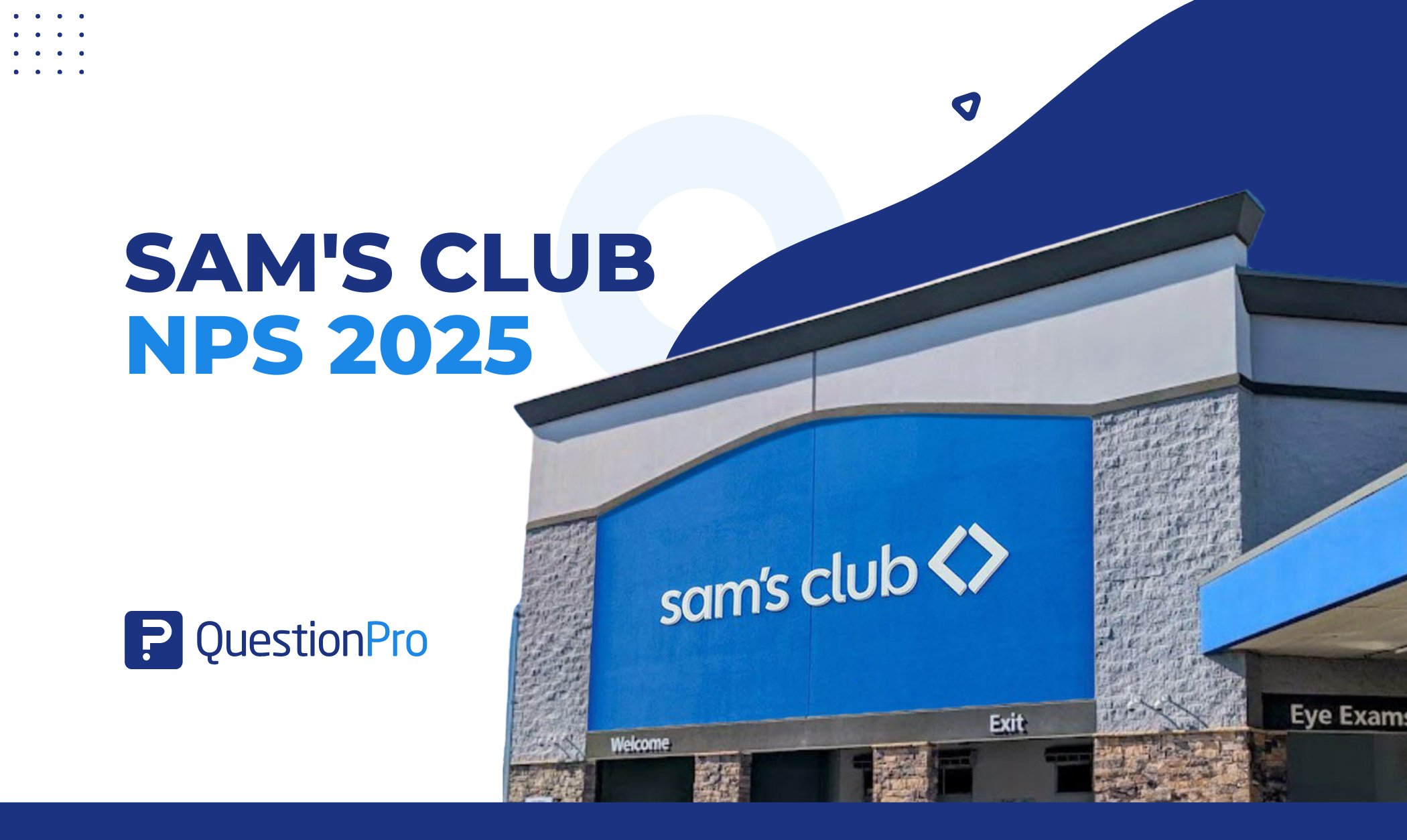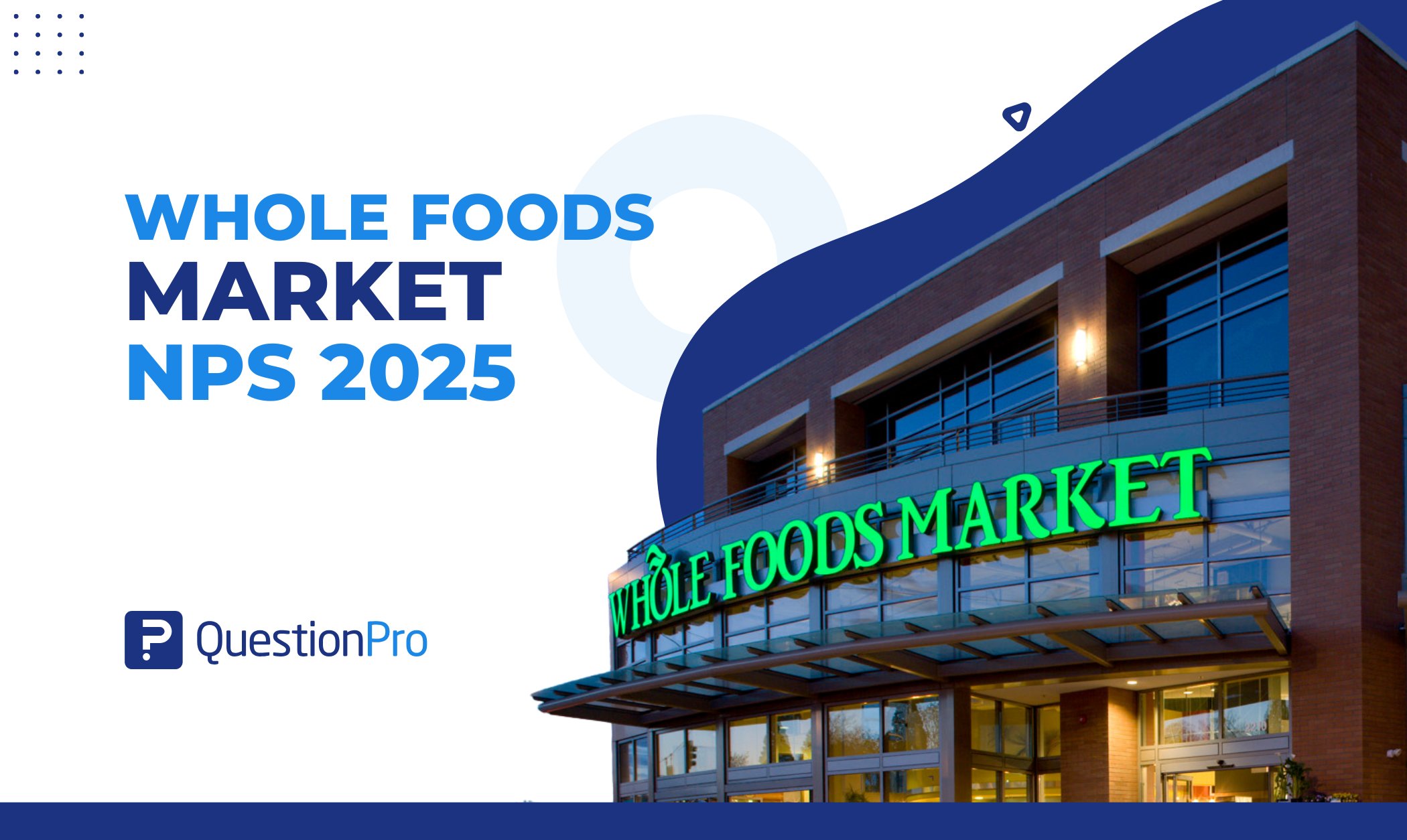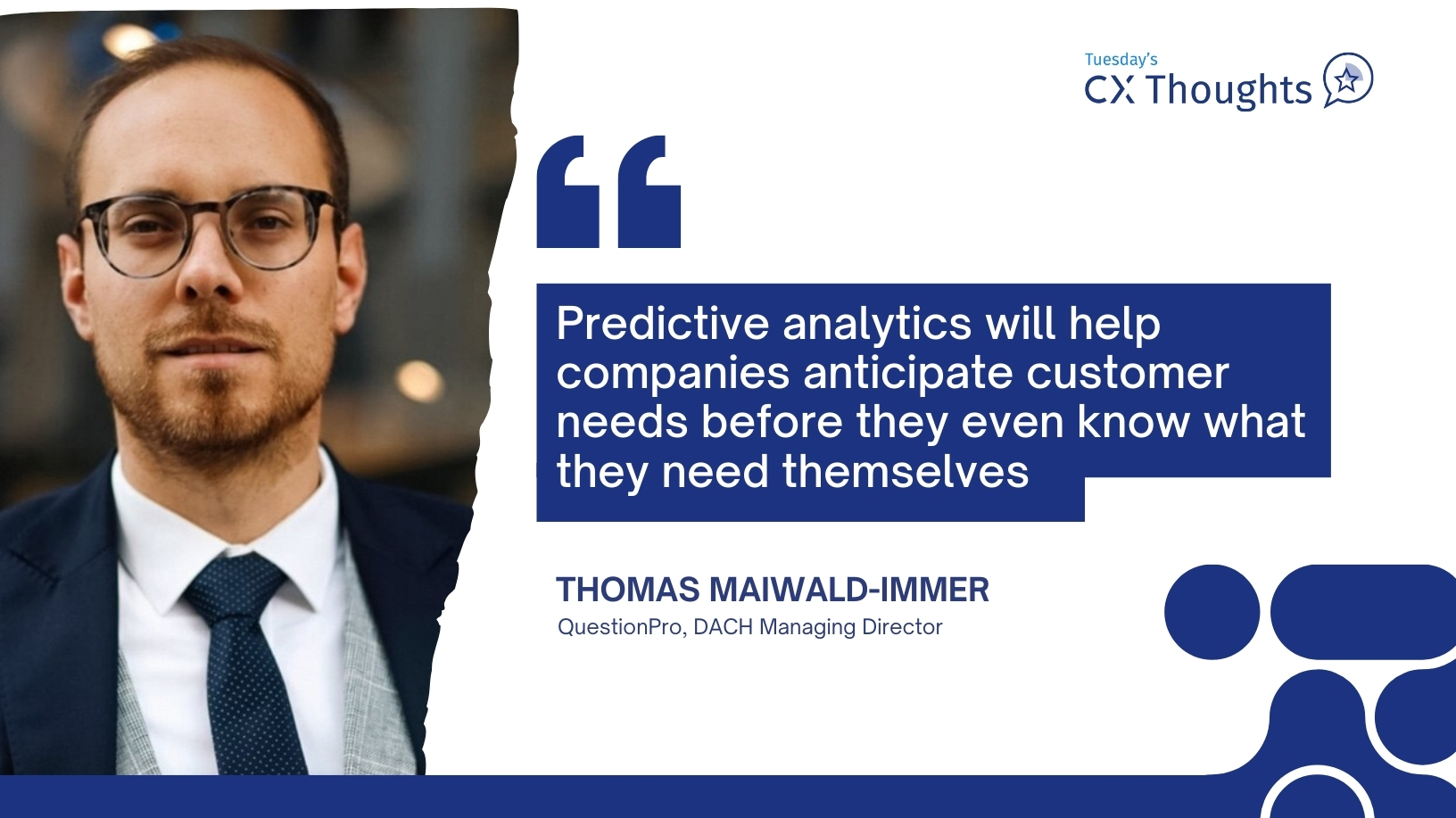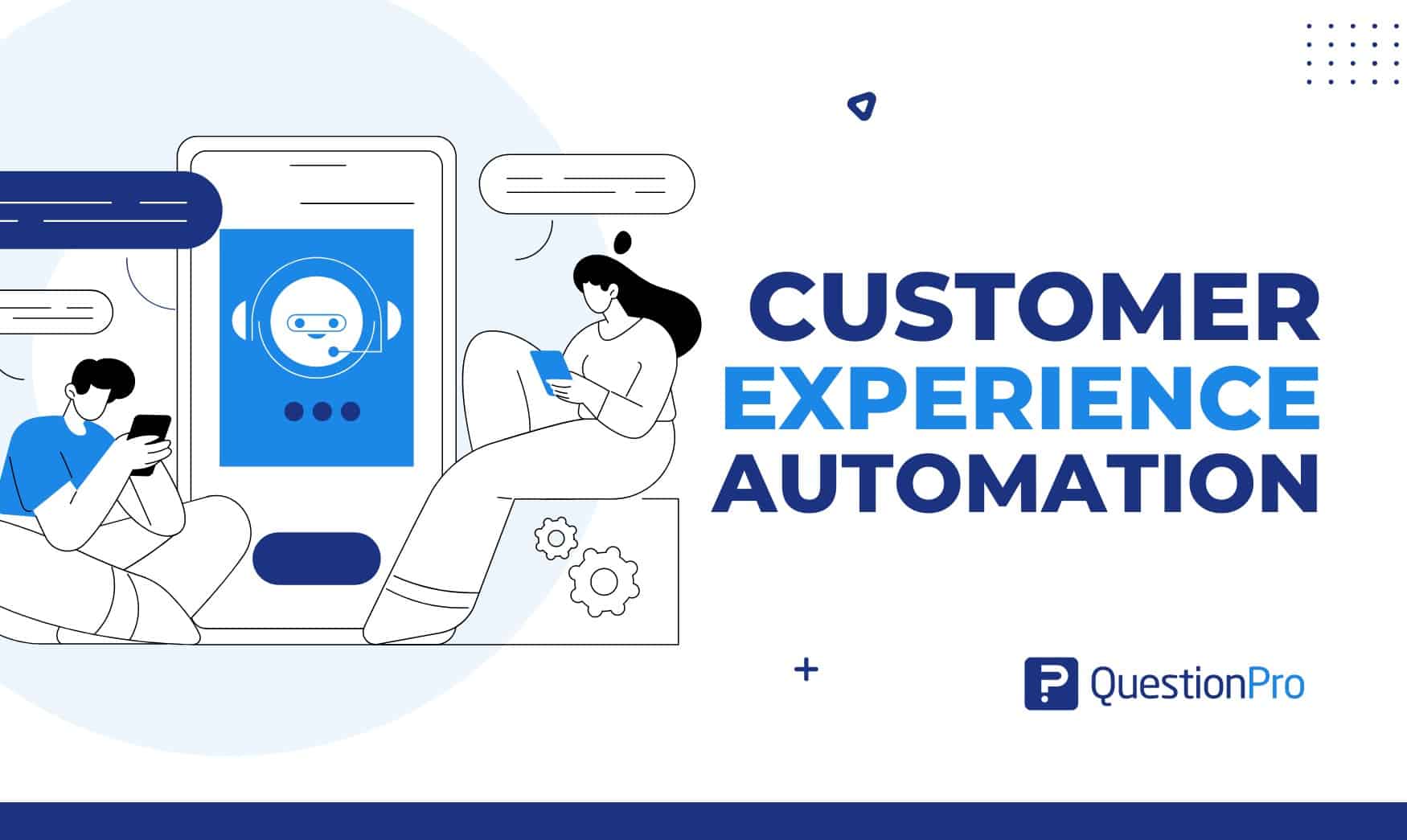
Customer experience automation uses technology to simplify and personalize customer interactions. With tools like AI, machine learning, and automated workflows, businesses can offer timely, relevant experiences across different channels.
Traditional marketing isn’t as popular nowadays. Businesses are focusing on engaging with customers to keep them coming back. Ensuring every interaction is smooth across different channels can be challenging and expensive. That’s where customer experience automation comes in to help.
In this blog, we’ll explore customer experience automation and how using automation platforms can assist businesses in improving their customer experience.
What is Customer Experience Automation?
Customer experience automation (CXA) streamlines tasks in the customer journey using automatic processes and tools instead of human intervention. It allows teams to focus on priority issues while maintaining a human touch where necessary, speeding up and enhancing critical parts of the customer experience.
CX automation uses AI-powered tools to improve personalized customer communications between a company and its customers. It helps with everything from first contact to resolving issues, making interactions easier and boosting productivity.
Evolution of Customer Service and Engagement
The customer service and engagement process has changed significantly over time. This change is due to new technology, customer behavior, and market dynamics. Understanding this evolution is important for businesses seeking to adapt and thrive in today’s competitive landscape.
This evolution includes different stages, such as
- Start of call centers,
- Growth of email and online support and
- Social media as a customer service channel.
Additionally, advanced technology has made it possible to create self-service solutions like chatbots and automated systems. These options offer customers quick help and make things more convenient for them.
The evolution continues as AI and data analysis join to customize experiences and predict customer needs. This constant change reflects ever-changing customer expectations and preferences, requiring businesses to adapt and innovate in their customer service and engagement approach.
Difference Between CX Automation And CRM Automation
Customer Experience Automation (CX Automation) and Customer Relationship Management Automation (CRM Automation) are both essential tools for building strong customer relationships, but they serve different purposes.
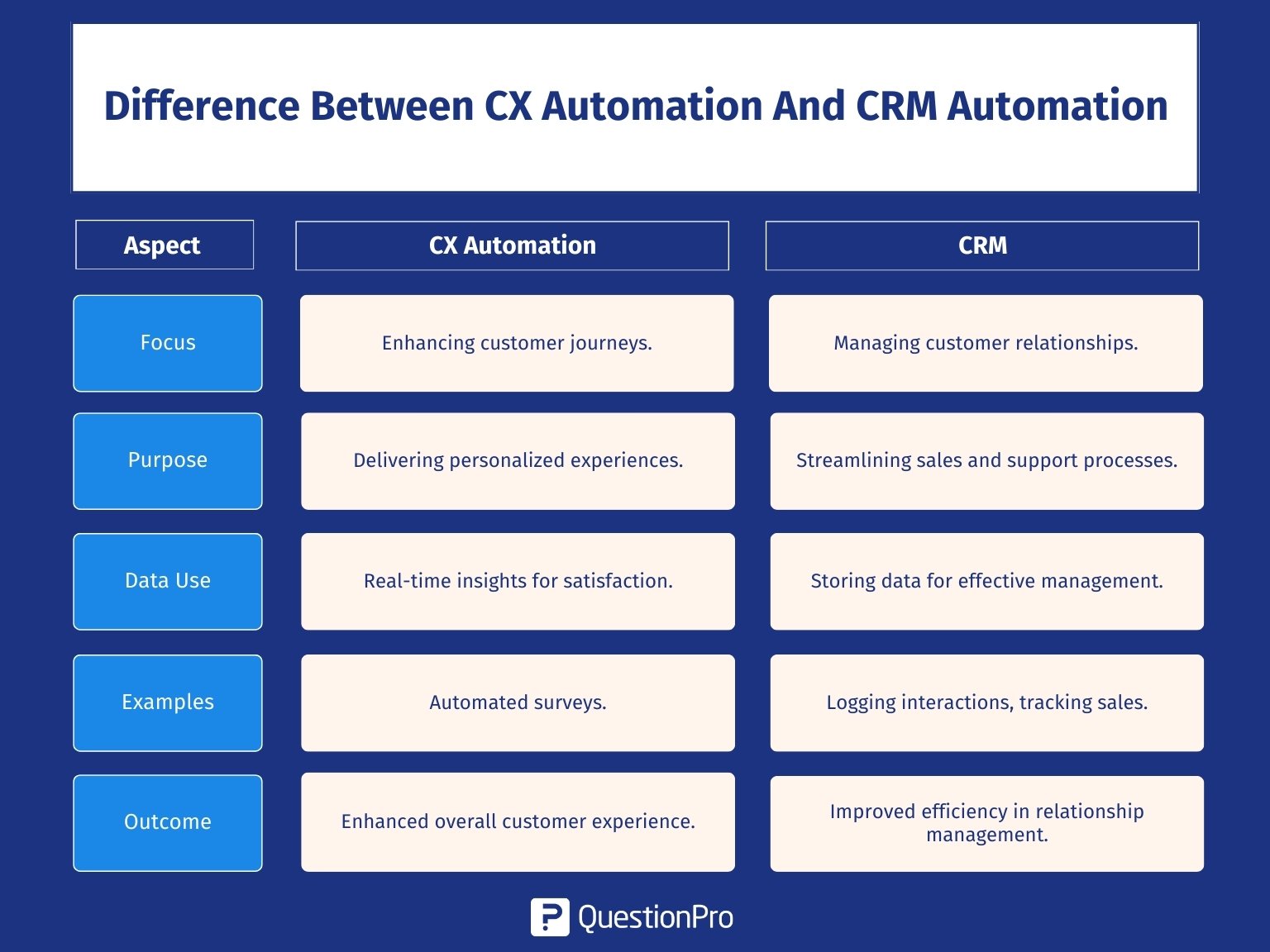
01. Focus
- CX Automation enhances the customer journey by automating personalized interactions and gathering real-time insights across touchpoints.
- CRM Automation centers on managing and tracking customer data, sales, and interactions to improve relationship-building.
02. Primary Purpose
- CX Automation aims to create seamless, personalized experiences by automatically responding to customer behaviors and preferences.
- CRM Automation is designed to store customer information, manage leads, and track customer communication history for sales and service efficiency.
03. Data Use
- CX Automation uses data to understand and improve customer satisfaction and loyalty through real-time insights and proactive engagement.
- CRM Automation systems maintain data for relationship management and often focus on sales processes, lead generation, and customer support tracking.
04. Examples of Use
- CX Automation: Automated surveys after a purchase, personalized content recommendations, and proactive problem-solving based on feedback.
- CRM Automation: Logging customer interactions, tracking sales stages, and managing contact information and account history.
05. Outcome
- CX Automation enhances the overall customer experience by tailoring interactions.
- CRM Automation improves efficiency in managing customer relationships and sales processes.
Difference Between CX Automation And Marketing Automation
CX automation and marketing automation are two essential strategies for enhancing business operations, but they serve different purposes.
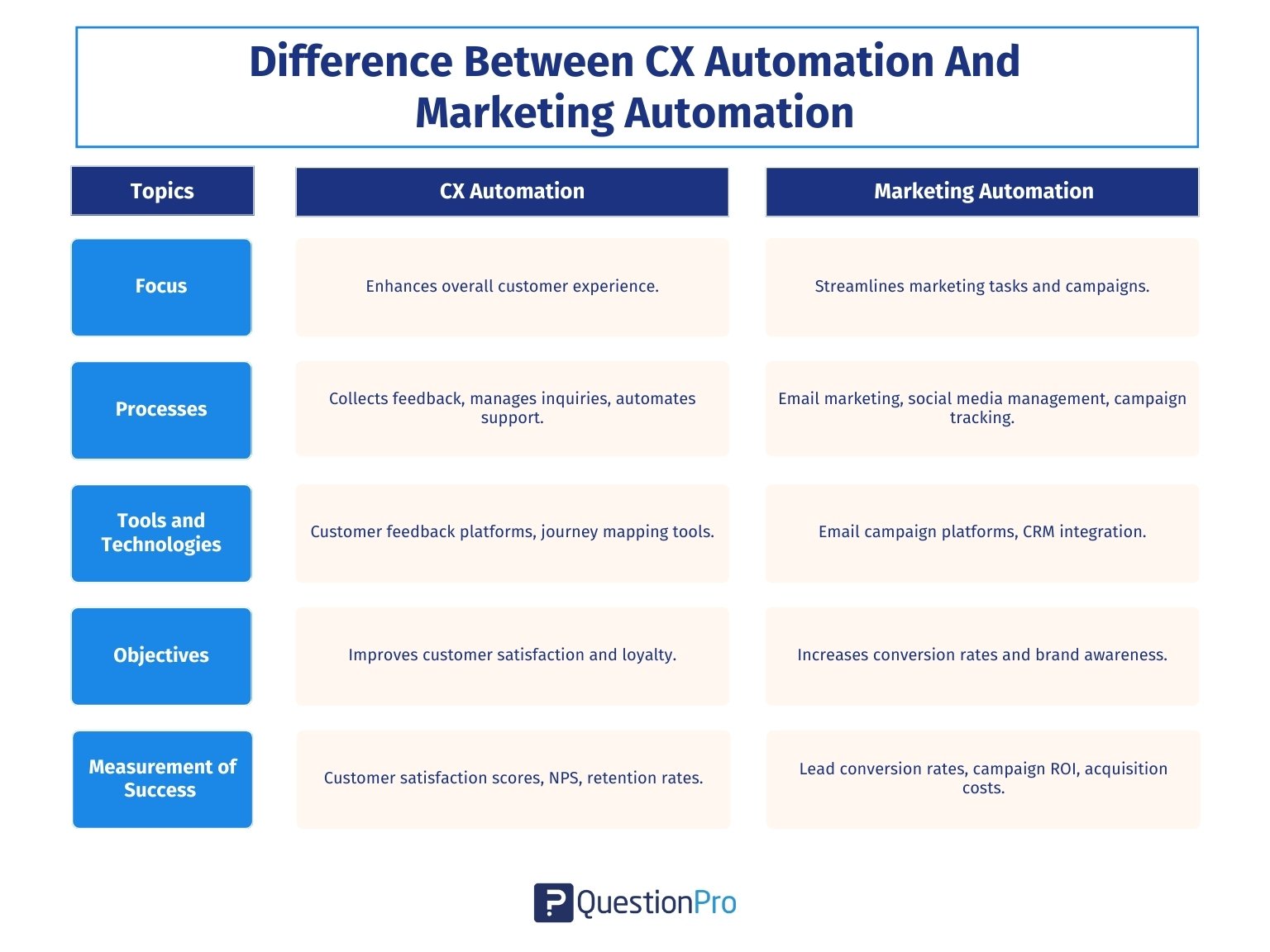
Focus
- Primarily aims to enhance the overall customer experience throughout the customer journey, focusing on customer satisfaction, feedback, and relationship management.
- Concentrates on streamlining marketing tasks and campaigns, focusing on lead generation, nurturing, and customer engagement through targeted messaging.
Processes Involved
- : Involves collecting and analyzing customer feedback, managing customer inquiries, and automating customer support and service interactions.
- To deliver tailored marketing messages, email marketing, social media management, campaign tracking, and audience segmentation are included.
Tools and Technologies
- Utilizes customer feedback platforms, journey mapping tools, and service automation software to optimize customer interactions.
- Employs platforms for email campaigns, CRM integration, and analytics to manage marketing efforts and track performance.
Objectives
- Aims to enhance customer satisfaction and customer loyalty by providing personalized experiences and addressing customer needs effectively.
- Focuses on increasing conversion rates, driving sales, and enhancing brand awareness through efficient marketing strategies.
Measurement of Success
- Success is measured through customer satisfaction scores, Net Promoter Score (NPS), and customer retention rates.
- Lead conversion rates, campaign ROI, and customer acquisition costs measure success.
In summary, while CX and marketing automation play crucial roles in a business’s strategy, they target different aspects of customer engagement and experience.
Key Elements of Customer Experience Automation
Customer experience automation uses different parts to smooth business and customer interactions and improve satisfaction and efficiency. Here are the key components:
1. Chatbots and Virtual Assistants
Chatbots and virtual assistants use artificial intelligence and natural language processing to respond instantly to customer queries. They also provide personalized suggestions and solve problems in real-time.
These automated systems can handle many tasks, like answering common questions and helping users with difficult tasks. This speeds up customer experience processes and improves overall customer satisfaction.
2. Self-Service Portals
Self-service portals enable customers to:
- Find answers to their questions.
- Check account details.
- Complete tasks without human assistance.
These platforms, available online or through mobile apps, offer:
- Convenience.
- Efficient customer interaction with businesses.
- Independence in resolving issues and managing accounts.
This leads to faster resolution times and reduced support costs. Businesses can address consumers’ increasing demand for autonomy and convenience by offering self-service options.
3. Personalization Engines
Personalization engines use AI algorithms to analyze customer data and behavior.
Benefits:
- It helps businesses deliver tailored experiences and recommendations.
- Increases customer engagement by aligning with individual preferences.
How it works:
- Analyzes data like preferences, purchase history, and browsing patterns.
- Customizes content, product offerings, and promotions for each customer.
This makes customers more involved and increases their chances of buying things. Personalization doesn’t just make customers happier; it also makes them more loyal to a brand over time.
4. Customer Journey Mapping
Customer journey mapping visualizes and analyzes customers’ various touchpoints and interactions with a business throughout their entire customer lifecycle. It helps companies to identify pain points, opportunities for improvement, and areas where automation can enhance the overall experience.
When a business understands how customers move through their journey, it can better organize its actions and tools to ensure customer satisfaction at every step.
5. Workflow Automation
Workflow automation automates repetitive tasks and processes, making things run smoother and faster. It helps by eliminating manual intervention and reducing human error, accelerating response times, reducing costs, and enhancing the overall quality of service.
Automation enables businesses to focus on more strategic activities while ensuring a seamless and consistent customer experience.
6. Data Analytics
Data analytics involves collecting, analyzing, and interpreting customer data to learn about their,
- actions.
- likes.
- trends.
Businesses can use this data to make informed decisions, optimize processes, and personalize interactions to better meet customer needs.
Advanced analytics methods like predictive modeling and sentiment analysis help organizations predict what customers might want, find ways to improve, and innovate how they automate customer experiences.
7. Omnichannel Communication
Omnichannel communication integrates various channels, including email, social media, SMS, and live chat, to provide a seamless experience across all touchpoints. It lets customers switch between channels smoothly, keeping their journey with a business steady.
This way of communicating helps organizations offer personalized and quick service, no matter which channel customers choose, which makes them happier and more likely to stick around.
Benefits of Customer Experience Automation
Customer experience automation offers numerous benefits to businesses. It enhances customer retention, various aspects of their operations, and interactions with customers:
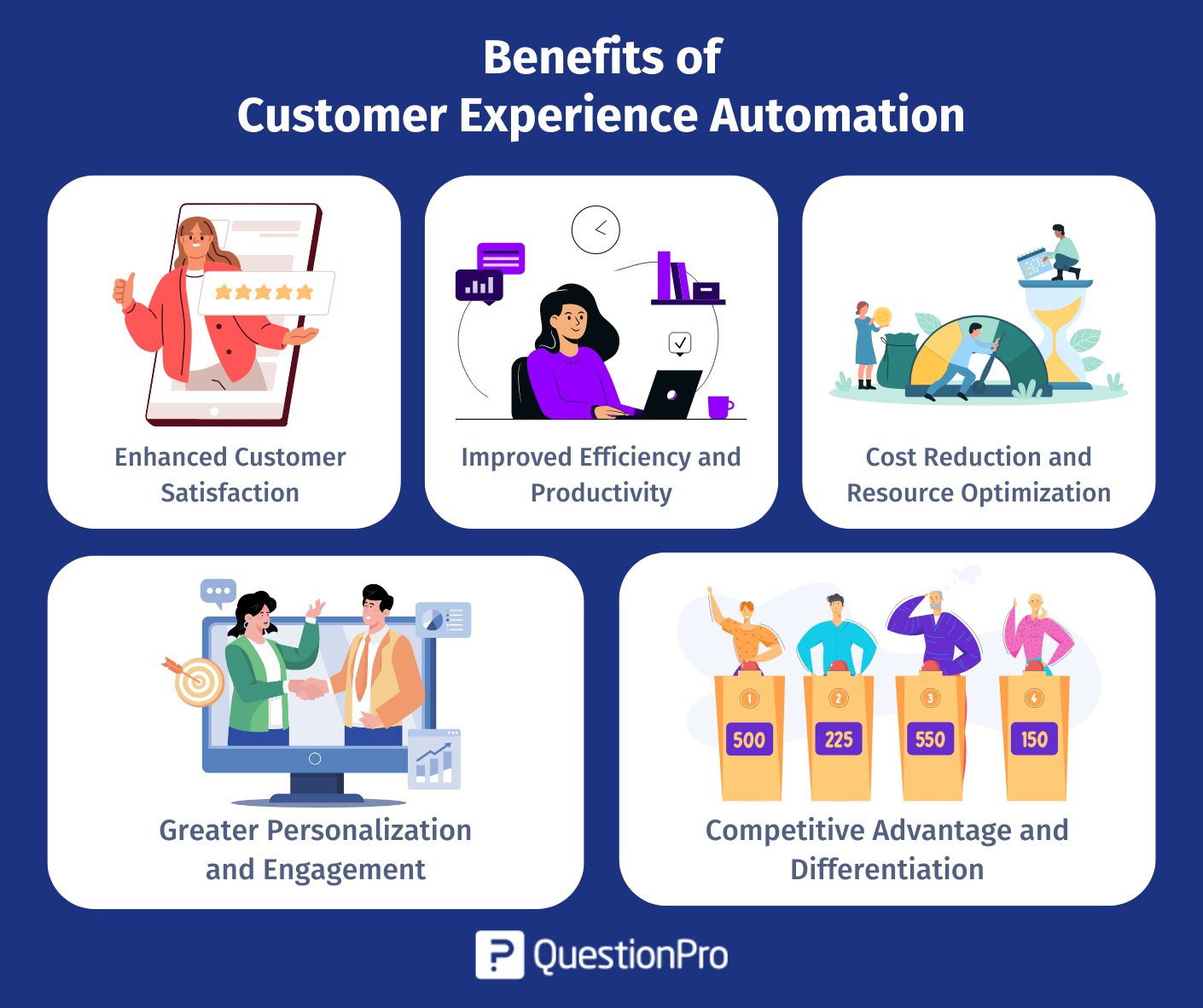
01. Enhanced Customer Satisfaction
- It makes things easier for customers by ensuring they get quick help and solutions that match their needs.
- Improves response times and reduces resolution times for customer inquiries or issues.
- Provides 24/7 availability for customer support, ensuring assistance is always accessible.
- Offers self-service options that empower customers to find solutions independently.
02. Improved Efficiency and Productivity
- Automates repetitive tasks like data entry, scheduling, and follow-up communications.
- Streamlines workflows and processes, minimizing manual intervention and reducing errors.
- Integrates with existing systems and tools to centralize operations and enhance collaboration.
- Provides real-time insights and analytics to identify bottlenecks and optimize processes.
03. Cost Reduction and Resource Optimization
- Lowers labor costs by reducing the need for manual intervention in customer service operations.
- Optimizes resource allocation by reallocating human resources to higher-value tasks.
- Reduces overhead costs associated with maintaining large customer support teams.
- Minimizes operational expenses through streamlined processes and automation efficiencies.
- Improves ROI by maximizing the impact of customer service investments and minimizing wastage.
04. Greater Personalization and Engagement
- Utilizes customer data to create personalized experiences across all touchpoints.
- Product recommendations, information, and offers are personalized based on user preferences and behavior.
- Enhances customer engagement through interactive features like chatbots and virtual assistants.
- Increases client loyalty and advocacy by displaying a thorough awareness of customer needs and preferences.
- Drives repeat purchases and long-term relationships by delivering relevant and timely communications.
05. Competitive Advantage and Differentiation
- Positions businesses as leaders in customer service excellence and innovation.
- Differentiates the brand by offering superior customer experiences compared to competitors.
- Builds brand loyalty and trust through consistent and personalized interactions.
- Attracts new customers and retains existing ones through positive word-of-mouth and referrals.
Customer Experience Automation Tools
Customer experience automation tools use technologies like artificial intelligence and automation to improve customer interaction with a company. The goal is to make things smoother for customers and help businesses better understand their needs.
These tools help businesses automate repetitive tasks, gather valuable insights, and deliver personalized customer experiences. This helps businesses run more smoothly and manage customer relationships.
Various cx automation software programs are available to help the entire customer journey and make customer interactions quicker and more efficient. Here are some important tools to consider:
1. Customer Feedback Automation
Customer feedback automation tools simplify the process of collecting and analyzing customer feedback. These tools help you gather valuable customer insights, make data-driven decisions, and continuously improve your products or services.
Here’s how these tools work in customer experience automation:
- Prompting customers to provide feedback through surveys at various touchpoints.
- Aggregating feedback data and generating actionable insights for improvement.
- Integrating feedback loops into the customer journey for continuous optimization.
A software company can implement customer feedback automation to collect user feedback through in-app surveys and email requests. By analyzing feedback trends, the company can identify what it can do to improve its product. Then, it can focus on improving to better satisfy its customers.
QuestionPro is a popular customer feedback automation tool that enables businesses to create and distribute automate customer surveys, collect responses, and analyze real-time feedback. By leveraging QuestionPro, companies can gather valuable insights to enhance their customer experience.
2. Notification Automation
Notification automation tools play a crucial role in dealing with customer churn. These tools allow you to send notifications automatically to customers who might leave, helping to bring them back and lowering churn rates.
Here’s how notification automation works in customer experience automation:
- Using data analysis and prediction tools to find existing customers who need to be more active or engaged.
- Sending alerts to these customers through emails, text messages, or app notifications without manual effort.
- We will customize the alerts according to how customers have behaved before, what they like, and how they’ve interacted to make the alerts more useful.
A subscription-based software company can use a notification automation tool to automatically send personalized emails to customers. These emails showcase new features, give discounts, or ask for feedback to understand why customers need to be more engaged.
3. Email Automation
Email automation is key to improving the customer experience. It helps businesses send personalized messages to customers without manual effort, handle inquiries, share promotions, and offer valuable information efficiently.
Here’s how email automation tools work:
- Tracking open and click-through rates to measure email engagement.
- Conducting A/B testing to optimize email content and increase effectiveness.
- Implementing automated email flows based on customer behavior and triggers.
When someone signs up in an online shop, they can receive a welcome email with a special discount code for their first purchase. If anyone abandons their shopping cart without completing the purchase, the email automation tool sends them another email.
This email reminds them about the stuff they left in their cart and might offer some help or a discount to convince them to finish their purchase.
4. Chatbots
Chatbots are crucial in modern customer service because they provide instant, helpful responses to customer inquiries and automate initial or simple requests. Here’s how they work:
- Chatbots offer immediate customer assistance, reducing wait times and providing timely support.
- They simulate human conversation, offering a more engaging and natural interaction experience.
- Chatbots can suggest relevant products, services, or resources based on customer queries or browsing history.
5. Customer Support Automation
Customer support automation tools can help you smooth your customer support operations and boost agents’ efficiency. Using AI technology, these tools improve customer support and ensure questions and problems are resolved quickly.
Let’s see how they can create an exceptional customer experience:
- Providing real-time suggestions to customer support agents based on customer history and context.
- Analyzing customer interactions through AI-powered chatbots and virtual assistants to identify patterns and trends.
- Offering automated self-service options and knowledge databases for customers with common questions.
A telecommunications provider can integrate AI-powered support tools into its call center operations to analyze customer inquiries and suggest relevant real-time automation solutions to customer service representatives. This reduces call resolution times and enhances the overall customer support experience.
6. Automation of Customer Segmentation and Profiling
Automated customer segmentation and profiling tools help businesses categorize their customers and create personalized experiences that match each customer’s needs. These tools analyze data and use smart computer programs to discover what customers have in common.
Here’s how they help make customer service better:
- Automatically dividing customers into groups based on age, behavior, or interests.
- Developing detailed profiles or personas for each customer group to better understand their likes and dislikes.
- Sending personalized marketing messages and content to each group to meet their specific needs.
A retail chain can use automated customer segmentation to categorize shoppers based on purchase history and preferences. By targeting specific segments with personalized promotions and recommendations, the company can increase customer engagement and loyalty.
Why should QuestionPro CX Be Used for CX Automation?
QuestionPro CX is a powerful platform that automates and enhances customer experience management. Combining advanced feedback collection, AI-driven analytics, and automated response tools helps businesses gather, understand, and act on customer insights in real-time.
With features like customizable dashboards, seamless CRM integration, and scalable design, QuestionPro CX enables companies to optimize each stage of the customer journey efficiently and proactively.
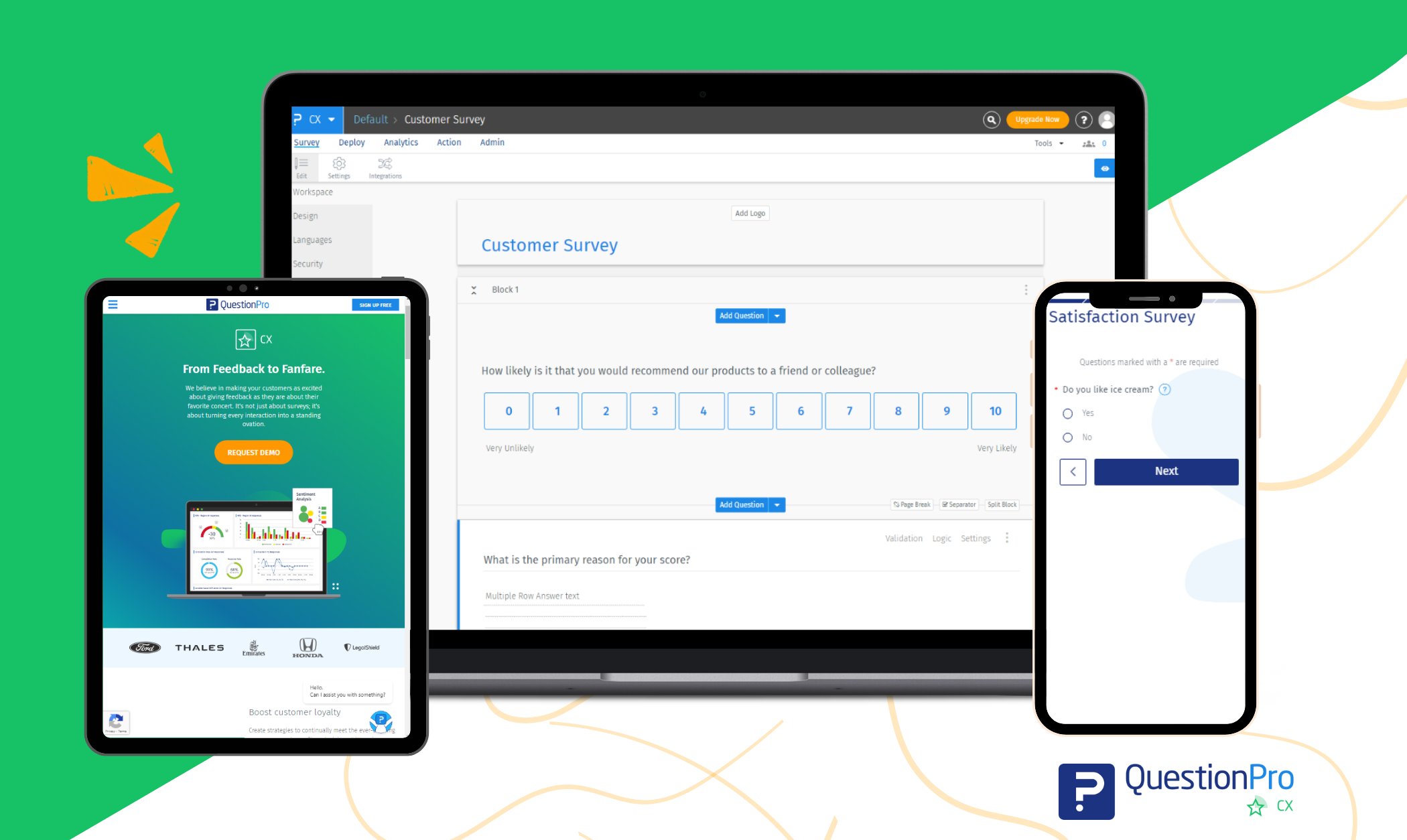
- Comprehensive Feedback Collection: Offers multiple ways to gather feedback across channels (surveys, web, mobile), making it easy to capture real-time insights.
- AI-Powered Analytics: Uses AI to analyze feedback and detect trends, emotions, and key issues, helping businesses understand customer sentiment at scale.
- Automated Alerts and Actions: Sends automatic alerts for negative feedback and allows quick responses, enabling proactive issue resolution.
- Customizable Dashboards: Provides real-time, easy-to-navigate dashboards that show customer experience metrics and trends for informed decision-making.
- Enhanced Customer Journey Mapping: Maps the customer journey with touchpoint data to better understand and optimize each stage.
QuestionPro CX helps automate and elevate the customer experience by making feedback collection, analysis, and action faster and more insightful.
Conclusion
Customer experience automation (CXA) significantly changes how businesses operate today. Companies using CXA can improve customer interactions, smooth their processes, and work more efficiently.
CX automation aims to provide smooth and tailored customer experiences, making them happier and more likely to stick with a brand. As businesses grow digitally, making CXA a top priority is crucial for staying ahead and meeting the needs of today’s customers.
QuestionPro provides tools for managing customer experiences. Using QuestionPro, you can automate tasks like social listening and organize your customer data efficiently. This means you’ll gather valuable data, giving you insights to improve customer experiences and reduce customer churn. If you want to automate how you connect with customers, start with QuestionPro.
Frequently Asked Questions (FAQs)
Automation in customer experience involves using technology to streamline and enhance interactions throughout the customer journey, improving efficiency and personalization.
Customer care automation uses automated tools and systems to handle customer service tasks without manual intervention, such as responding to inquiries and resolving issues.
A CX automation platform is a software solution that manages and optimizes customer interactions and experiences through automated processes and AI-driven tools.
The three main parts of customer automation rules are automated responses (e.g., chatbots), self-service options (e.g., knowledge bases), and workflow automation (e.g., task management).




